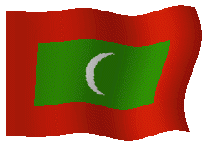MALDIVES
2002
 d
d
Issue date: 21.May.2002
Sheet 1, 6 and 7 R.
Macrauchenia, Glyptodon, Nesodon,
Imperial Tapir, Short-faced bear, Mammoth,
with man in margin.
Sheet 2, 6 and 7 R.;
Sivatherium, Flat-headed peccary, Shasta ground sloth,
Harlan's ground sloth, European woolly rhino, Dwarf pronghorn,
with man in margin,
Two miniature sheets and 25 R.;
Saber toothed cat (probably Smilodon), woolly mammoth (Mammuthus).
Scott: 2632a-2632f, 2633a-2633f, 2634-2635.
Stanley Gibbons: 3715-3726, 3727a, 3727b.
Glyptodon is misspelled Giyptodon, the straight tusks show the Mammoth to be (probably)
Stegomastodon or Mammut.
Short-faced bear is Arctodus, Flat-headed peccary is Platygonus compressus,
Shasta ground sloth is Nothrotheriops shastensis, Harlan's ground sloth is
Glossotherium harlani, European woolly rhino is Coelodonta antiquitatis,
Dwarf pronghorn is Capromeyx minor.
![]()
The Blue Crystal Skulls
Are considered to be one of the world greatest mysteries. Some of these artifacts have been researched by Hewlett Packard ( reported in Richard Garvin's book, "The Crystal Skull", 1973) and continue to baffle the modern scientific community. There have been a number of phenomena associated with the crystal skulls including:
One of the most mysterious artifacts that has been discovered upon our planet are known as the Crystal Skulls.
A Crystal Skull is simply defined as an ancient artifact discovered made from various type of quartz crystals that has the appearance of a human size (or larger) and shaped skull. Most of these ancient Crystal Skulls have been uncovered near or within ancient ruins located in Mexico or Central America, possibly linked to the Mesoamerican cultures of this region. However within recent years, crystal skulls are now surfacing or being reported in other parts of the world such as in South America, Europe and Asia.


